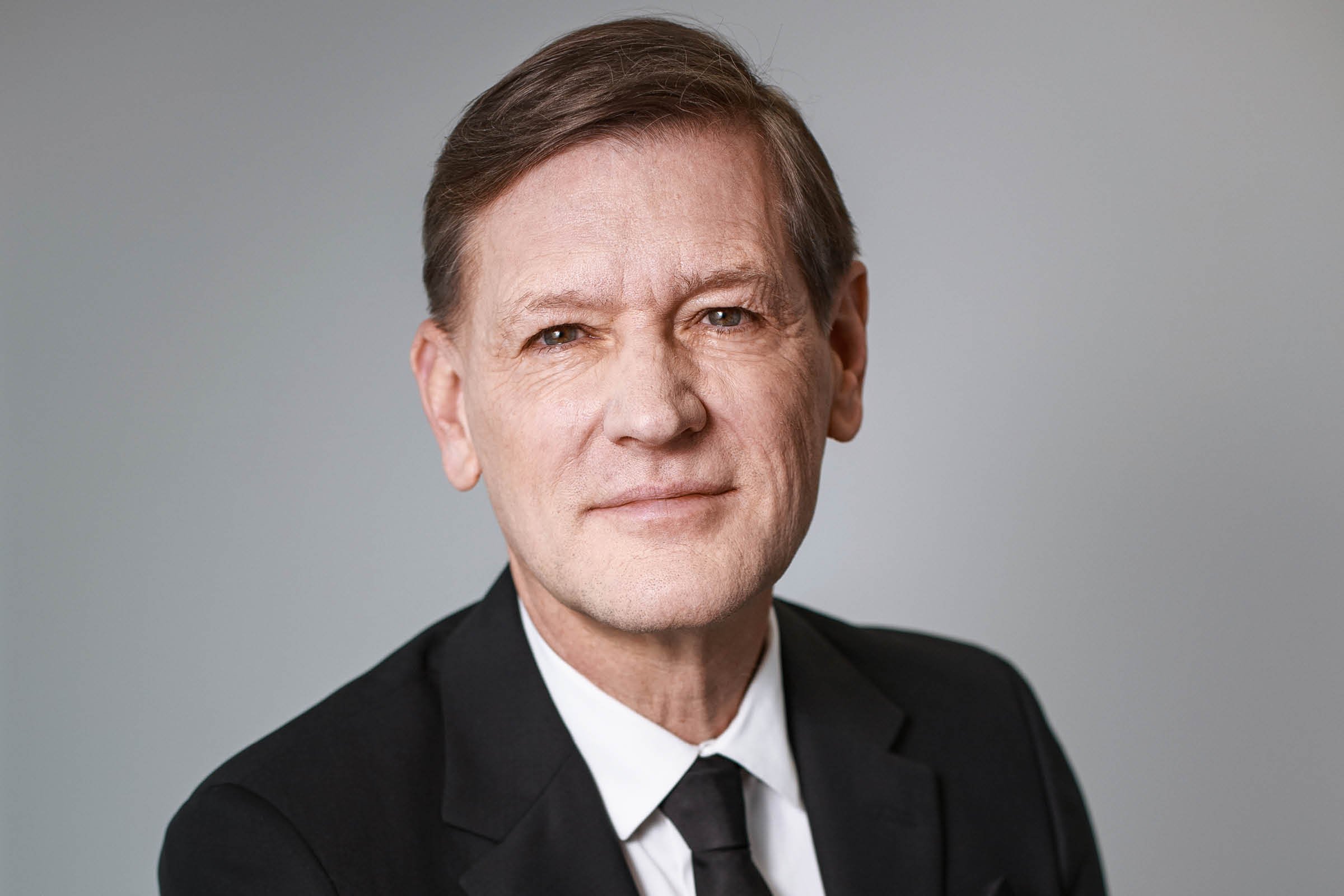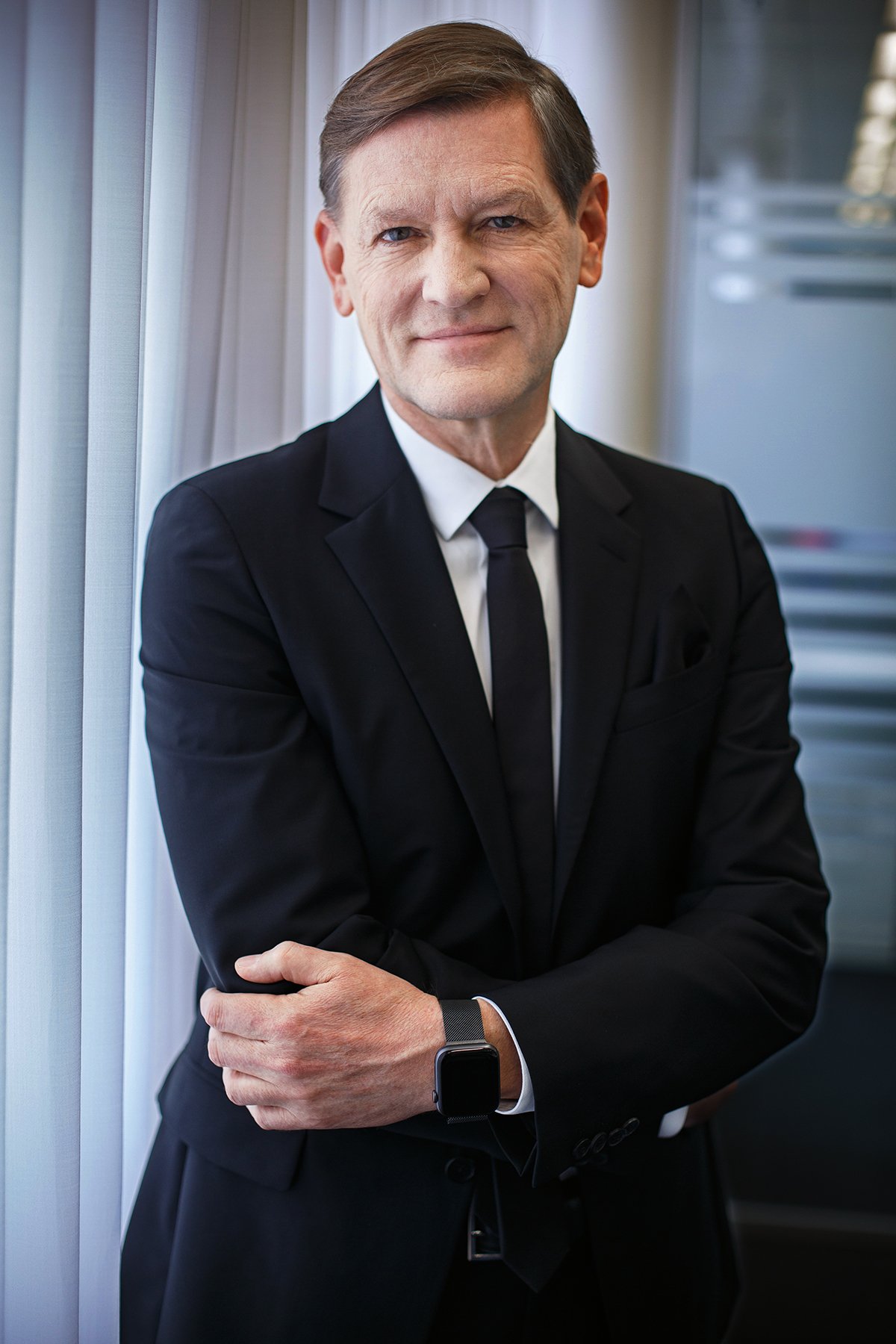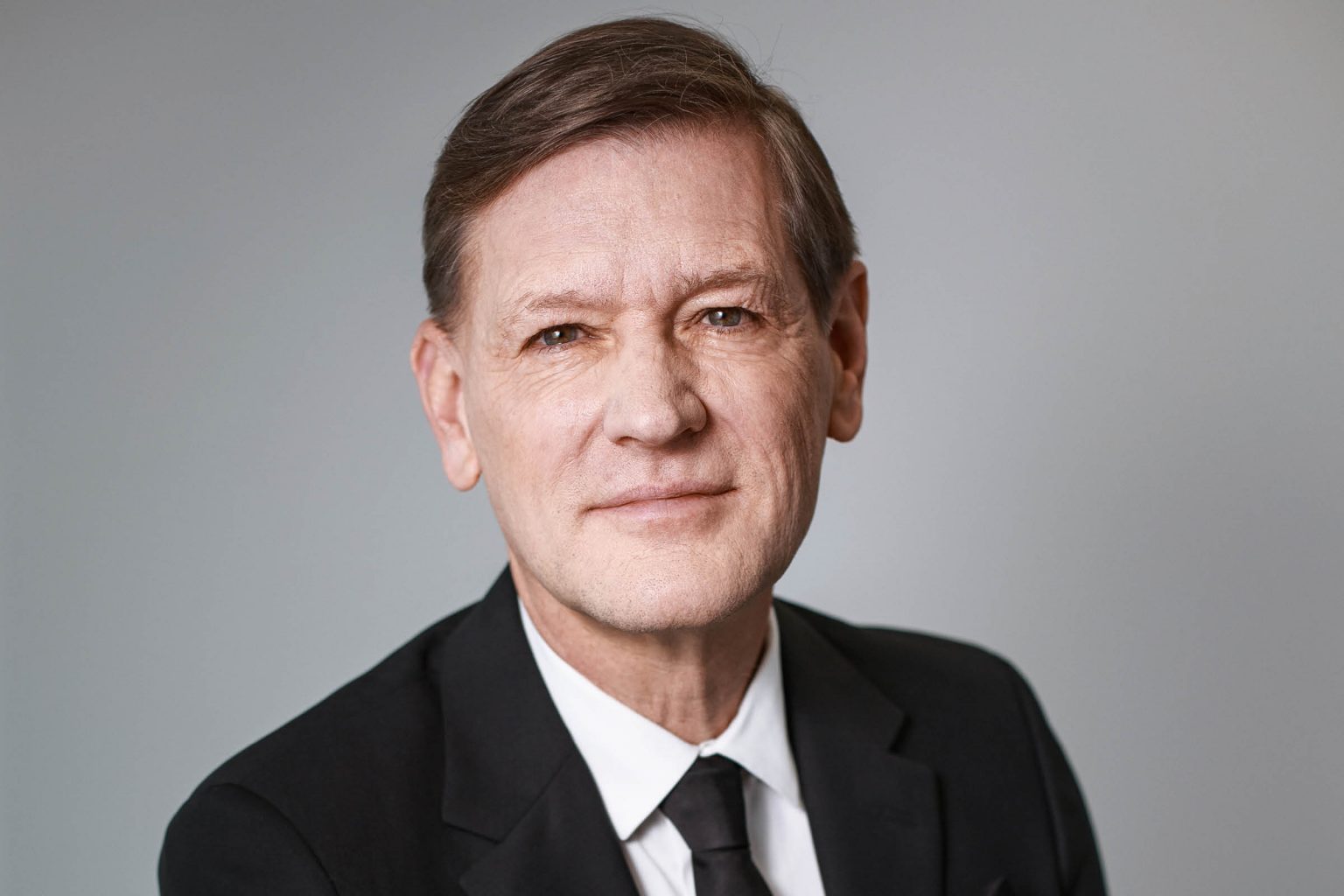When Flemming Ørnskov became CEO of Galderma in 2019, he faced the task of turning what had been a division of Nestlé into a standalone company. Co-founded in 1981 by Nestlé and L’Oréal, the firm later became Nestlé Skin Health.

“As you can imagine, with Nestlé being this gigantic company, this division was a very small percentage of the revenues of the total Nestlé business, so some functions were either rudimentary or only partly built,” Flemming says.
One challenge since taking over the dermatology and skincare innovator has been to beef up the parts of the company that were underdeveloped due to the fact it had always been part of a large multinational. The first task was to build a lean and efficient independent company platform to handle human resources, policies, structure and various other systems.
At the same time, Flemming stayed focused on the company’s already strong performance and on accelerating it by maintaining a strong pipeline. Once that was taken care of, it was time to look ahead to boosting performance in the medium- to long-term.
“In 2020, we started building an R&D organisation, which the company did not have, and a corporate development organisation so we could supplement this with external innovation. There were rudiments of that within the company, but the fully fledged corporate development and R&D teams were only built in the second half of 2020,” he reveals.

With the fundamentals taken care of, Flemming started thinking about his unifying vision for the company. “Where are we going on this journey?” he asked himself. The answer came to him easily.
“I didn’t need to have a lot of strategy consultants helping me here because, given market circumstances and other issues and acquisitions by various companies, the path towards becoming the world’s leading dermatology company was pretty open.”
As such, Galderma’s vision and strategy were built around becoming the undisputed global leader in dermatology. There were certain details to be ironed out, according to Flemming, such as how to build the strategy, how to build the tactics, hire the right people and set up the structure, but he already knew exactly what success would look like.
“I would say from a CEO perspective, an investor perspective and a people engagement perspective, this is one of the simplest tasks I’ve had in my life,” he smiles.
Nurturing the pipeline
Even as he builds up Galderma’s research and development activities and strengthens its product pipeline, Flemming does not neglect the value and needs of the company’s existing brands. “Growth doesn’t start tomorrow, it starts today,” he insists.
The path towards becoming the world’s leading dermatology company was pretty open.
“So how do we look at the company’s brands today? I’m a bit of a brand defender, and I think a lot of the time, companies dream about the future, whereas we focus on what we have.” Galderma operates in three key business areas: consumer care, aesthetics and prescriptions.
That is to say, it offers over-the-counter skin treatments, minimally invasive and non-invasive procedures, and products to treat skin conditions you would see your doctor about.
“The team and I were in a very fortunate situation that in all of the three businesses, we had either the number one or the number two products overall, or in the subcategories that we’re in,” Flemming points out.
To make the most of these valuable brands, the team at Galderma held numerous meetings about branding, brand execution, commercial execution and even details like packaging and colours. They brainstormed new iterations of existing products and delved into how digitalisation could help them grow the brands.

“We wanted to nurture the existing products, optimise them and give them new life,” Flemming shares. To develop the differentiated products and technologies the company needed to drive future growth, he began building, strengthening and centralising teams of people who would spend every day focused on each of Galderma’s three business areas and optimising the pipeline.
He then built a team that looks beyond the company to seek acquisitions and other ways to supplement its offerings. “Either we developed in-house or we acquired or partnered ourselves with a few more of those brands,” Flemming says.
“This is something I’m hugely ambitious about, and it is a big focus of mine because I know in health care it’s all about innovation and the growth you want to drive.” Before he arrived at Galderma, the company relied heavily on outsourcing.
“But my philosophy is, if you want to be world class and you want to be the global leader in a field like dermatology, you also need to continue to innovate,” he asserts.
It was a little bit of an unusual entry; I worked for multiple months with them without knowing what my role would be.
One region where the company invested in R&D recently is Sweden, where the team is driving innovation in aesthetics. While Galderma already had scattered R&D organisations focused on consumer products and prescriptions, Flemming beefed up those teams with resources to boost their capacity.
Part of that process involved going to companies like Johnson & Johnson and Allergan to attract top talent. “We’ve had people with long tenures and great expertise come and take leadership positions,” he says.
Unusual entry
Before taking on his current role at Galderma, Flemming ran the UK-founded pharmaceutical company Shire, which was sold to Takeda in 2019 for US$62.5 billion (€51.6 billion) As he was negotiating his exit, a private equity company called EQT, which was founded by the Wallenberg family and is now a top 10 private equity group, asked him for a meeting and explained it had a very attractive yet very competitive opportunity: Nestlé had decided to spin off its Nestlé Skin Health business.
Initially, he was asked to provide an assessment of the prospect. Flemming had successfully built other companies, so the company wanted to know what he would do with this one, and whether there were any issues it had missed.
“As the time passed, from about April to June, I got more and more involved, and in June, EQT, GIC and a few other investors became the winner with the highest bid,” Flemming recalls. “It was a little bit of an unusual entry; I worked for multiple months with them without knowing what my role would be.
They had said it would probably be something on the board. I had a long time to look at the company from the outside; I even had the opportunity to sit in when the management team of what was called Nestlé Skin Health presented the business to multiple potential owners.”
Galderma has an advantage when it comes to talent acquisition: it offers innovative products that are leaders in their field – brands like Cetaphil, Restylane and Epiduo – and prospective employees are eager to be part of that story.
“My experience is that the culture follows the strategy and the products. People like to work for companies that have cool, innovative and leading brands. People like to be part of that process,” Flemming says.
“Of course, today, there’s a new dimension. You need to make sure the company not only has cool brands and a lot of growth, but that it is also environmentally responsible, that it is green, and you think about CO2 emissions and making packaging recyclable. So we’ve also kicked off things in that area, and that helps build a stronger culture.”
Iconic brands
The nexus between good brands and good talent is an important area of focus for Flemming. The great people he works with and the products are what make him most proud to be CEO. “We have some products that have changed the lives of patients or have had a significant impact on consumers,” he beams.

“It’s really what I’m super focused about, that we at Galderma continue to strive to have the best products, the best brands. And I think we have some really attractive brands already. Some of them I will call iconic, like Cetaphil, which is one of our largest brands and has a very, very long history.”
One of the next steps for Galderma will be coordinating its branding globally, something that presents challenges because of the nature of the industry. One issue is that different regions have different regulatory time lines and frameworks for approving healthcare products and procedures.
All the same, a global approach has become imperative as consumers in the dermatology space become more and more savvy and connected with one another. “Whether it’s consumer aesthetics or prescription dermatology, it’s turning into a bit of a village online,” Flemming reveals.
“The patients or the consumers will be aware of what goes on in the US very quickly. Of course, we can only promote in the areas where we have approvals, and we don’t do anything other than that. But the knowledge that patients or consumers who are seeking treatment are talking to each other on online chat groups is rapidly changing our business.”
We are now looking at pushing our partners or looking for new partners that can meet the new, more environmentally focused and greener goals.
US sales represent about half of Galderma’s revenue and as news of product launches quickly spreads abroad, the company aims to launch in other parts of the world as quickly as possible. “Country-specific launches or country-specific products, I think, are now a bit of a thing of the past,” Flemming reflects.
“As we go forward, we are focusing on global launches, global products, global availability, and that also means we focus on global branding and our global image. I am very focused on brands and brand equity. We recently strengthened both our corporate offering and our corporate branding, because it’s clear to us that there is no situation where a country is isolated from the rest of the world.”
Well-informed consumers are becoming more assertive, even in the prescription business, where doctors are ultimately in charge of which product the patient uses.
“With the younger patients particularly, many of them are in the acne space, and they go to the doctor pretty well informed by ‘Dr Google’ or some chat room they’re in,” he says.
“So that’s the challenge, but also the huge opportunity we have. I think that’s why we are a very unique player in the healthcare business – because a lot of other people are separating businesses and doing things to segregate businesses.”
Galderma, on the other hand, maintains a strong focus across consumer care, prescriptions and aesthetics, and the strengths it gains from each of these specialties are shared equally throughout the business.
It is as much a company that produces products to hydrate your skin as it is one that produces medicines you buy in a pharmacy for skin conditions, and it is a business that produces high-end, sophisticated biologics that take a very long time to develop.
“I think what makes us unique is that we wake up in the morning and we go to bed at night thinking about skin,” Flemming enthuses. “We want to be experts, we want to focus on our core priority because you can be distracted every day, but if you know from morning to evening that what you need to do is become better at understanding skin, then skin products drive innovation. It’s focused, but it’s also in-depth, and I think that helps us a lot.”
Smaller footprint
With a presence in 100 countries, Galderma understands the importance of adaptability. The company’s nimbleness is something that is enabled by numerous key suppliers working in various fields, from packaging to shipping and logistics.

These suppliers have helped the firm to innovate and adapt; for example, with forward-thinking packaging designs that help deliver products in new ways. Now, Galderma is pushing its suppliers to make progress on sustainability.
“We have kicked off a process with the ambitious goals of making more of our packaging out of recyclable paper, making sure that we use less plastics or PVC,” Flemming clarifies.
“We are now looking at pushing our partners or looking for new partners that can meet the new, more environmentally focused and greener goals. We’ve also been looking at how we can decrease CO2 emissions from freight because that’s one of the big areas in our energy use. The team is developing a very ambitious plan, and it’s important for our owners that we have various specific targets, so we give them a biannual update. They are holding us accountable for consistently reducing our footprint.”
Another big ambition of Flemming’s is to make Galderma one of the most digitally enabled companies, and not just in the dermatology space. “If we can not only be super innovative with a fantastic portfolio and pipeline with really differentiated brands, but also be seen as a real trailblazer in digital execution, I think I would be really proud of that,” he says.



